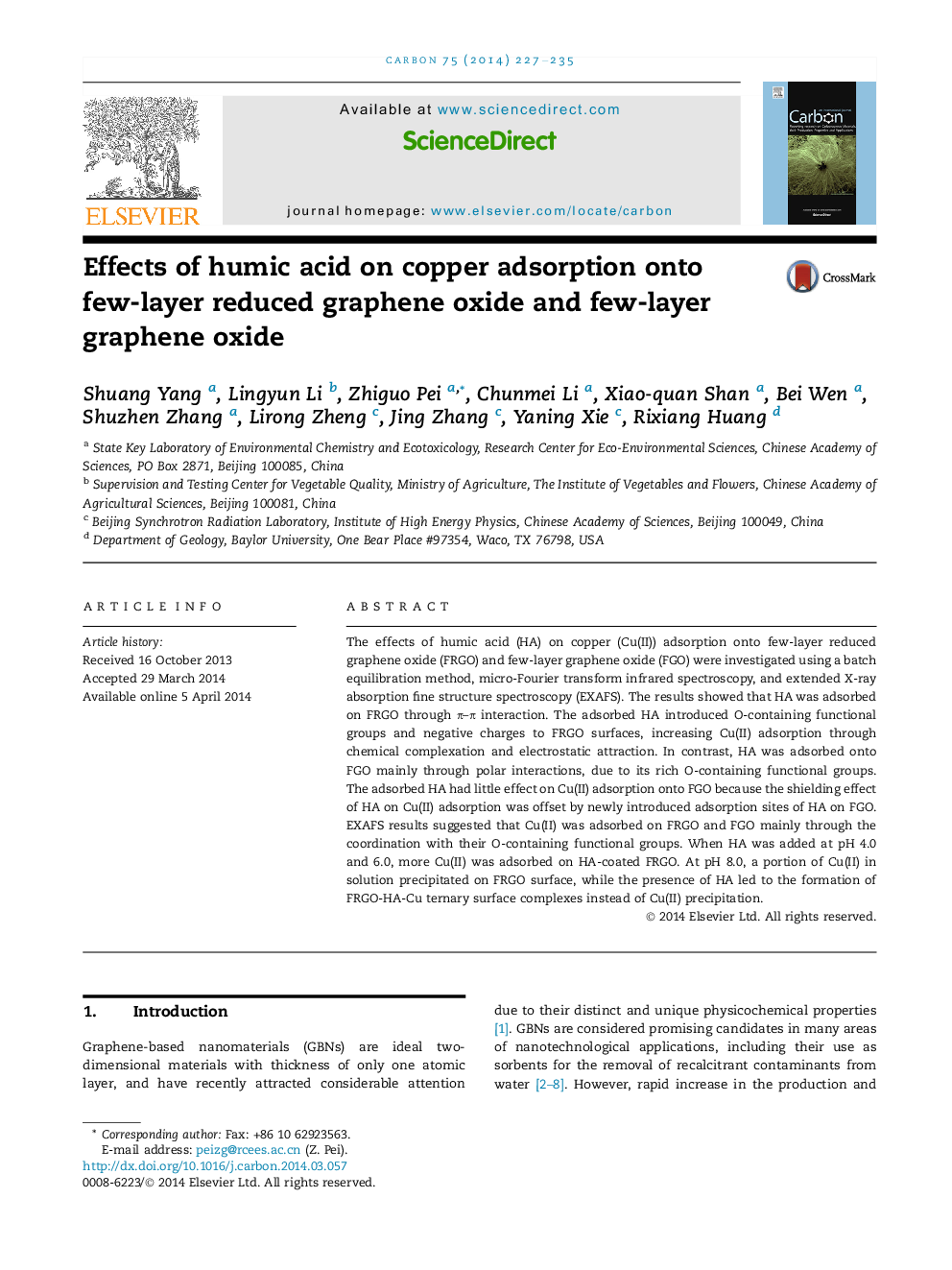| Article ID | Journal | Published Year | Pages | File Type |
|---|---|---|---|---|
| 1413804 | Carbon | 2014 | 9 Pages |
The effects of humic acid (HA) on copper (Cu(II)) adsorption onto few-layer reduced graphene oxide (FRGO) and few-layer graphene oxide (FGO) were investigated using a batch equilibration method, micro-Fourier transform infrared spectroscopy, and extended X-ray absorption fine structure spectroscopy (EXAFS). The results showed that HA was adsorbed on FRGO through π–π interaction. The adsorbed HA introduced O-containing functional groups and negative charges to FRGO surfaces, increasing Cu(II) adsorption through chemical complexation and electrostatic attraction. In contrast, HA was adsorbed onto FGO mainly through polar interactions, due to its rich O-containing functional groups. The adsorbed HA had little effect on Cu(II) adsorption onto FGO because the shielding effect of HA on Cu(II) adsorption was offset by newly introduced adsorption sites of HA on FGO. EXAFS results suggested that Cu(II) was adsorbed on FRGO and FGO mainly through the coordination with their O-containing functional groups. When HA was added at pH 4.0 and 6.0, more Cu(II) was adsorbed on HA-coated FRGO. At pH 8.0, a portion of Cu(II) in solution precipitated on FRGO surface, while the presence of HA led to the formation of FRGO-HA-Cu ternary surface complexes instead of Cu(II) precipitation.
